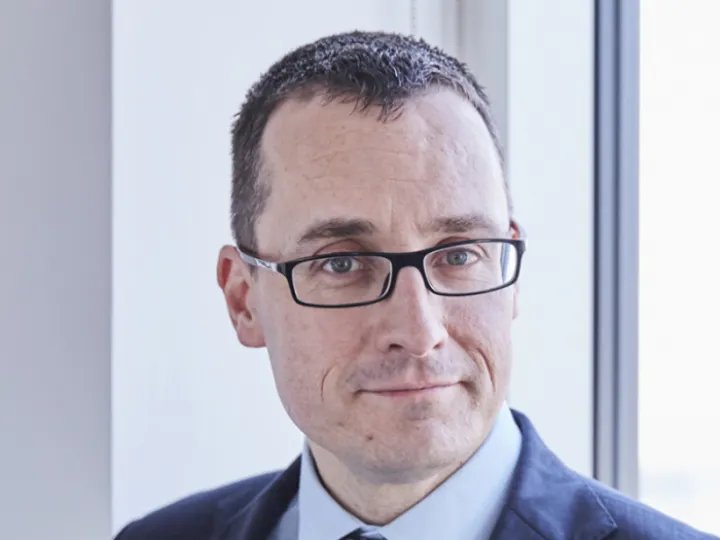Never enough!
A catastrophic injury claimant will generally not receive enough money through their accommodation claim to fund their accommodation needs. What can they do? Ben Townsend, Head of Personal Injury Leeds at law firm Stewarts , examines how the accommodation claim is calculated and what can be done to maximise the claimant's position.
The accommodation difference
It is simple to claim for a wheelchair on behalf of a paralysed person. The court will allow the full cost of that equipment to be claimed from the defendant, safe in the knowledge that eventually that item will wear out. At that point, the wheelchair will not have any significant value. For decades, accommodation claims have been more problematic than this simple example of a wheelchair because, unlike other items, houses are likely to have a value at the end of the claimant's life. Judges have traditionally been concerned that if claimants could claim the full capital cost of their extra accommodation needs, they would be left with a valuable asset at the end of their life, effectively meaning they have been over-compensated. In other words, the money claimed will never actually be lost.
It could be argued that if a claimant requires a new property through the fault of someone else, the fact that there is an asset left after they die is a relatively small concern compared to the prospect of them lacking the money they need to purchase the property they require because of their injuries. However, that is not the way the law has evolved.
Calculating accommodation claims
The modern way that the courts avoid a windfall at the end of the claimant's life is to make an allowance for the reversionary interest in the property at the claimant's death.
In order for a judge to calculate an accommodation claim, the first step is for the judge to determine the value of the property the claimant already has or would have had if the accident had not occurred. The court may require evidence from an expert valuer for this purpose. The judge will then decide the value of the property the claimant now requires as a result of their injuries. That will be based upon a combination of medical and architectural expert evidence. The judge will then deduct the cost of the former from the latter to determine the extra capital the claimant now requires in order to buy the house they need.
The judge must decide the claimant's life expectancy. This will usually be the subject of medical expert evidence. The judge will then deduct from the extra capital sum the claimant requires the notional reversionary interest calculated by reference to the claimant's predicted life expectancy.
The way in which the formula operates means that the longer the claimant's life expectancy, the lower the reversionary interest that is deducted from it. This is because the longer the claimant lives in the property, the less valuable the reversionary interest becomes.
Problems
The first problem with this calculation for the claimant is that the judge is making a deduction from the sum the claimant requires to purchase their new property. This deduction of the reversionary interest anticipated for the claimant's estate at the end of their life reduces the sum awarded to the claimant. However, the claimant still has to pay the full value of the property. In order to cover the shortfall, the claimant has to take money from other areas of their compensation. Therefore, the claimant does not have the benefit of that money available to them during their life, as it will be locked into their new property, only to be liquidated after their death.
The method of calculating the loss works reasonably for longer life expectancy cases. For instance, if the claimant has a life expectancy of 14.5 years, they will recover 50% of their capital costs through this method. However, the calculation becomes unworkable for claimants with much shorter life expectancies. The courts have recognised that this method will not work in short life expectancy cases. A claimant's lawyer may try to claim the full capital cost of a new property in such cases, but the law is not yet settled as to how the courts will deal with this situation.
Solutions
In most cases, the claimant will need to purchase a house that will require an amount of adaptation to meet the needs caused by their injuries. As set out above, the property's capital cost will not be fully recovered in most cases. One way to reduce the shortfall is to spend less money on the purchase of the property. The claimant's lawyer will often advise the claimant to purchase a cheaper property requiring more adaptation to meet the claimant's needs. Although there is likely to be a loss on capital expenditure, adaptation costs can be claimed pound for pound, making a cheap property requiring a large amount of work much more attractive.
For instance, if a claimant requires a bungalow, a small bungalow on a large patch of land that allows for substantial extension of the property will be attractive. The solicitor will need to look at local planning rules and building regulations to ensure such significant work is feasible. Outline planning permission will usually be sought before the purchase is completed. By taking an imaginative approach towards the property, the claimant can maximise the amount of money they are able to recover.
Conclusion
The current method for calculating accommodation claims means that most claimants will fail to recover the money they require for the property they need. They have to borrow money from other heads of loss in their compensation award. While this is particularly a problem for claimants with short life expectancies, most claimants can benefit from purchasing a smaller property that requires much more work to make it into the house they can live in for the rest of their lives, which ought to be the aim of catastrophic injury compensation claims.
For more information click here or email Ben at btownsend@stewartslaw.com


